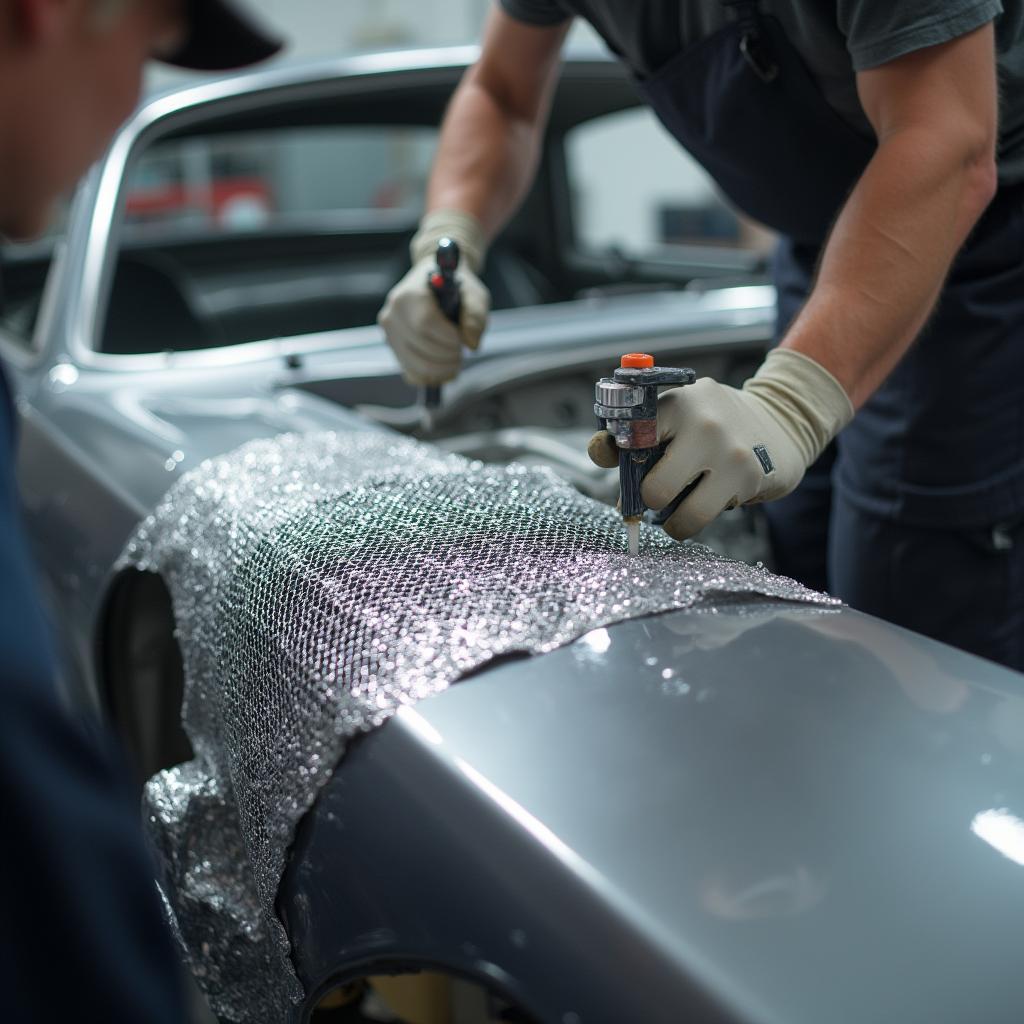Aluminum mesh is becoming increasingly popular in car body repair due to its lightweight, corrosion-resistant, and durable properties. This method provides a strong and long-lasting solution for various types of damage, from minor dents to larger holes.
What is Aluminum Mesh Used For in Car Body Repair?
Aluminum mesh is a versatile material used in car body repair to bridge gaps, reinforce weakened areas, and provide a base for body filler. It’s particularly effective for:
- Rust Repair: Aluminum mesh acts as a barrier against moisture and prevents rust from spreading after the affected area has been treated.
- Hole Repair: For larger holes, aluminum mesh can be used to bridge the gap and create a solid foundation for body filler.
- Dent Repair: In some cases, aluminum mesh can be used to reinforce dents from behind, providing additional strength and preventing them from reappearing.
Benefits of Using Aluminum Mesh
There are several advantages to choosing aluminum mesh for your car body repair:
- Lightweight: Aluminum is significantly lighter than steel, making it ideal for maintaining the vehicle’s performance and fuel efficiency.
- Corrosion Resistance: Unlike steel, aluminum naturally forms a protective oxide layer that resists rust and corrosion.
- Durability: Aluminum mesh provides a strong and long-lasting repair that can withstand vibrations and impacts.
- Cost-Effective: Aluminum mesh is a relatively inexpensive material, making it a budget-friendly option for repairs.
How is Aluminum Mesh Used in Car Body Repair?
While the exact process may vary, here’s a general overview of how aluminum mesh is used in car body repair:
- Preparation: The damaged area is cleaned thoroughly, removing any rust, paint, or debris. The surface is then sanded to create better adhesion for the mesh.
- Mesh Cutting and Shaping: The aluminum mesh is cut to the appropriate size and shape to cover the damaged area with some overlap onto the surrounding undamaged metal.
- Mesh Attachment: The mesh is secured to the damaged area using a strong adhesive designed for automotive bodywork. It’s crucial to ensure the mesh sits flush against the surface.
- Body Filler Application: Once the adhesive has cured, body filler is applied over the mesh, filling in any gaps and creating a smooth, even surface.
- Sanding and Finishing: After the body filler hardens, it is sanded down to match the contours of the surrounding bodywork. Primer, paint, and a clear coat are then applied for a seamless finish.
Aluminum Mesh vs. Fiberglass Cloth: Which is Right for Your Repair?
Both aluminum mesh and fiberglass cloth are used in car body repair, but they have different strengths:
- Aluminum Mesh: Ideal for rust repair, bridging large holes, and reinforcing dents from behind. Provides a rigid and durable repair.
- Fiberglass Cloth: Better suited for smaller holes, cracks, and shaping curved surfaces. Offers flexibility and conforms well to irregular shapes.
The best choice for your specific repair will depend on the type and severity of the damage, as well as the desired outcome.
Conclusion
Aluminum mesh is an effective and versatile solution for a variety of car body repair needs. Its lightweight, corrosion-resistant, and durable properties make it an increasingly popular choice for both professionals and DIY enthusiasts. By understanding the applications and benefits of aluminum mesh, you can make informed decisions about your vehicle’s repair and keep your car looking its best for years to come.



